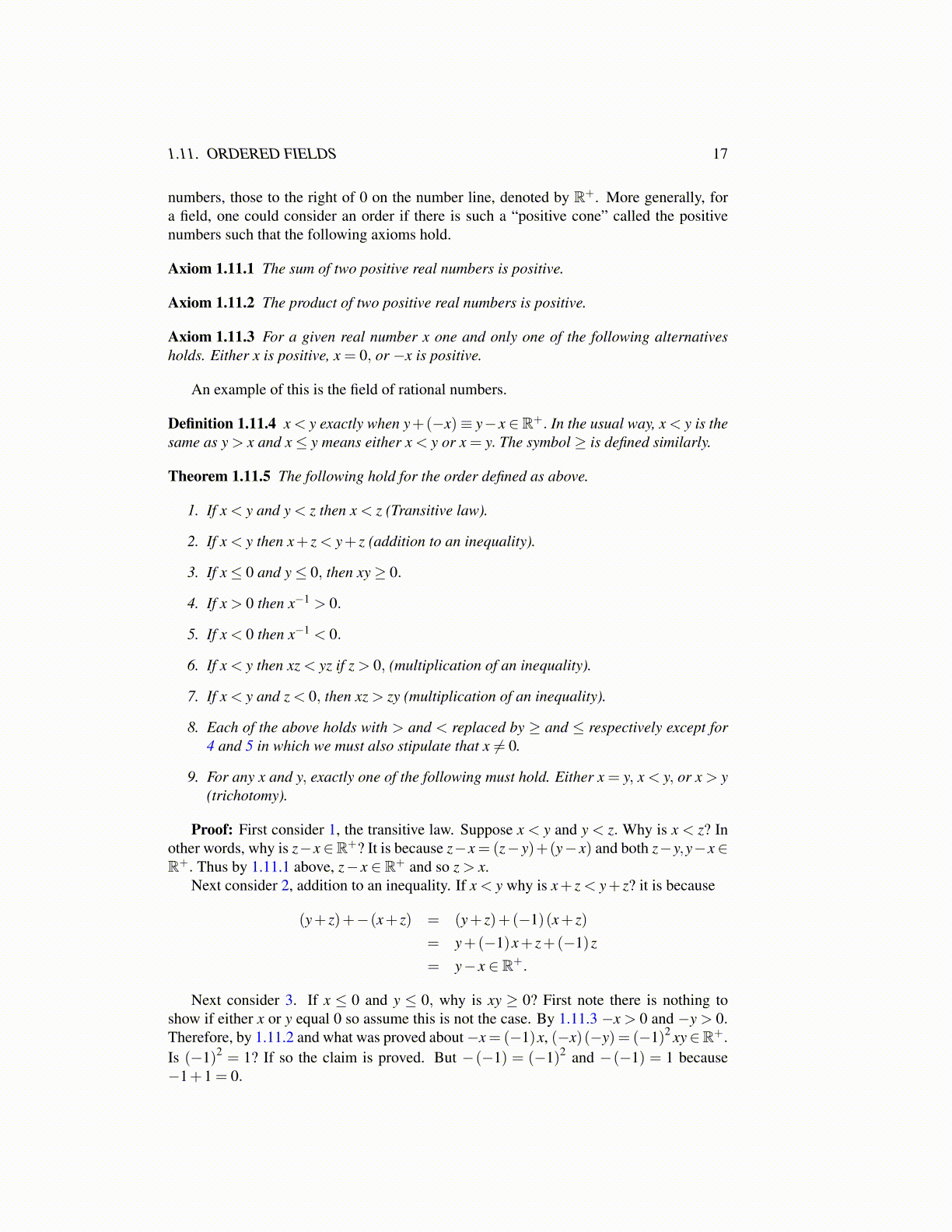
1.11. ORDERED FIELDS 17
numbers, those to the right of 0 on the number line, denoted by R+. More generally, fora field, one could consider an order if there is such a “positive cone” called the positivenumbers such that the following axioms hold.
Axiom 1.11.1 The sum of two positive real numbers is positive.
Axiom 1.11.2 The product of two positive real numbers is positive.
Axiom 1.11.3 For a given real number x one and only one of the following alternativesholds. Either x is positive, x = 0, or −x is positive.
An example of this is the field of rational numbers.
Definition 1.11.4 x < y exactly when y+(−x)≡ y−x ∈R+. In the usual way, x < y is thesame as y > x and x≤ y means either x < y or x = y. The symbol ≥ is defined similarly.
Theorem 1.11.5 The following hold for the order defined as above.
1. If x < y and y < z then x < z (Transitive law).
2. If x < y then x+ z < y+ z (addition to an inequality).
3. If x≤ 0 and y≤ 0, then xy≥ 0.
4. If x > 0 then x−1 > 0.
5. If x < 0 then x−1 < 0.
6. If x < y then xz < yz if z > 0, (multiplication of an inequality).
7. If x < y and z < 0, then xz > zy (multiplication of an inequality).
8. Each of the above holds with > and < replaced by ≥ and ≤ respectively except for4 and 5 in which we must also stipulate that x ̸= 0.
9. For any x and y, exactly one of the following must hold. Either x = y, x < y, or x > y(trichotomy).
Proof: First consider 1, the transitive law. Suppose x < y and y < z. Why is x < z? Inother words, why is z−x∈R+? It is because z−x = (z− y)+(y− x) and both z−y,y−x∈R+. Thus by 1.11.1 above, z− x ∈ R+ and so z > x.
Next consider 2, addition to an inequality. If x < y why is x+ z < y+ z? it is because
(y+ z)+−(x+ z) = (y+ z)+(−1)(x+ z)
= y+(−1)x+ z+(−1)z
= y− x ∈ R+.
Next consider 3. If x ≤ 0 and y ≤ 0, why is xy ≥ 0? First note there is nothing toshow if either x or y equal 0 so assume this is not the case. By 1.11.3 −x > 0 and −y > 0.Therefore, by 1.11.2 and what was proved about−x = (−1)x, (−x)(−y) = (−1)2 xy∈R+.
Is (−1)2 = 1? If so the claim is proved. But −(−1) = (−1)2 and −(−1) = 1 because−1+1 = 0.